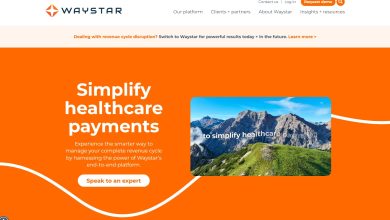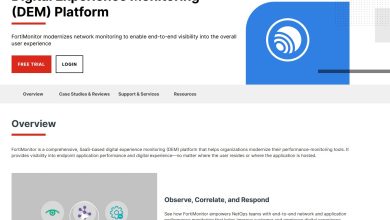
B2B marketing isn’t just about showcasing the products/services you sell. You are asking business owners and executives to trust that the solutions you’re offering will positively impact their bottom lines and overall well-being. It means you’ll need a lead generation plan that does two things. It draws in your ideal customers and communicates an expert-level understanding of their needs and concerns to inspire them to engage you.
Let’s explore five tactics that may help with this, shall we?
1. Case Studies
Case studies have plenty of influence on buyers at the awareness and evaluation stages. They help potential buyers learn about your brand, how you offer solutions and the outcomes that come through.
Case studies take their readers on a journey where they learn about the problems a particular customer faced and how they tried to resolve their issues unsuccessfully. This customer embarks on the path to find an ally to help overcome their problems, how the ally resolved the problem, and the positive outcomes they enjoyed.
Successful case studies contain research, data points, and quotes from the customer’s staff to make the story more compelling.
How does this help you?
Case studies help increase relatability. As potential customers peruse case studies, they visualize themselves as the heroes in need of an ally (you) and how you can help them overcome. The prospects also gauge your expertise and the value you can bring to their business.
As you create your case studies, remember to do so in multiple formats to maximize reach. You can summarize the study into an appealing infographic, convert it to video, or pick out customer quotes and stats for sharing on social platforms.
2. Influencer Marketing
A study revealed that brands that invest in influencer marketing enjoy up to $6.50 for every dollar they sink in. Further, up to 51 percent of marketers believe that the customers they acquire through influencer marketing are of much better quality.
This essentially means that an influencer marketing program may help you with audience engagement, brand building, lead generation, and customer acquisition.
How so?
Because 90 percent of buyers are swayed by word-of-mouth on their journey to making purchase decisions. This word-of-mouth holds greater sway if it comes from industry leaders or peers they hold in high regard.
So, when you’re choosing an influencer, don’t just go for a celebrity or social media star, but rather someone your audiences relate to.
You may find that existing customers, industry researchers, analysts, thought-leaders, and internal executives make better influencers.
Your audiences are likely to know them and appreciate their input within your industry, which ultimately increases credibility.
3. Cold Calling
Prospects are wired differently.
Some are curt, others are friendly, you’ll encounter nasty ones, some who ask too many questions, while others listen in silence. There’s no telling how a prospect will react until after you make the cold call.
With research proving that senior executives prefer taking calls, this strategy isn’t going anywhere. What we need is to equip our teams with rapport-building skills to help them navigate this unknown. Rapport allows you to create an environment where your listener feels comfortable speaking with you. It enhances your reputation and builds trust.
Top tips include:
- Smile. While it’s difficult to read non-verbal cues over the phone, people can “hear” you smile. This subconsciously influences you both and helps set a positive and friendly tone for the rest of the conversation.
- Convey empathy. Trying to view the situation from your prospect’s position and genuinely care about their concerns. Offer thoughtful suggestions to help solve their issues, even when these solutions aren’t directly tied to your product/service.
- Remain respectful. B2B buyers speak of salespeople who swear on the phone. As you can imagine, those calls didn’t bear much fruit. Good manners are foundational when establishing a connection with your prospect.
- Listen intently. How many of us like being interrupted? Allow your prospects to finish their thoughts before asking another question or sharing a helpful suggestion. It will help you assess their situation correctly.
4. Leverage Social Proof
Long after prospective buyers have checked out your website and read your content and emails, they will look for something to validate the opinions they are forming about you.
That something is social proof—credible success stories from those who have worked with you previously that prove you’re worth your salt.
Best practices include:
Make brand ambassadors out of your employees. Your employees have unique audiences that your marketing team may not have access to. Get them to talk about your company culture, product/service launches, upcoming sponsored events, etc
Leverage social listening to capture social proof in real time. Monitor brand mentions on social channels to know what audiences, fans, and customers are saying. Be sure to answer questions and respond to feedback or comments promptly.
Collaborate with customers. We keep going back to past (or existing customers) a lot, which should tell you that they are one of your greatest assets. The more positive their experience is, the more authentic and persuasive their testimonial or review will be.
5. Interactive Content
There is a reason audiences readily share their information while using interactive content than with gated static content.
Interactive content uses a range of activities like asking questions, offering preferences, and giving you choices to receive an outcome. The promise of getting something in return invites users to input information readily.
Great interactive content types include:
- Calculators. They provide potential costs or ROI should the user take the next step. This knowledge boosts transparency and grants the prospect a greater level of confidence as they know what to expect.
- Outcome quizzes. These are fun and generally used to make recommendations. Through a series of choices or preferences made by the user, the quiz works out expected outcomes. You can use these outcomes to educate the user accordingly.
- Surveys and polls. People love getting their voices heard and providing feedback. This type of content is useful for “Target Market Analysis (for better understanding of customers) and capturing leads’ information.









